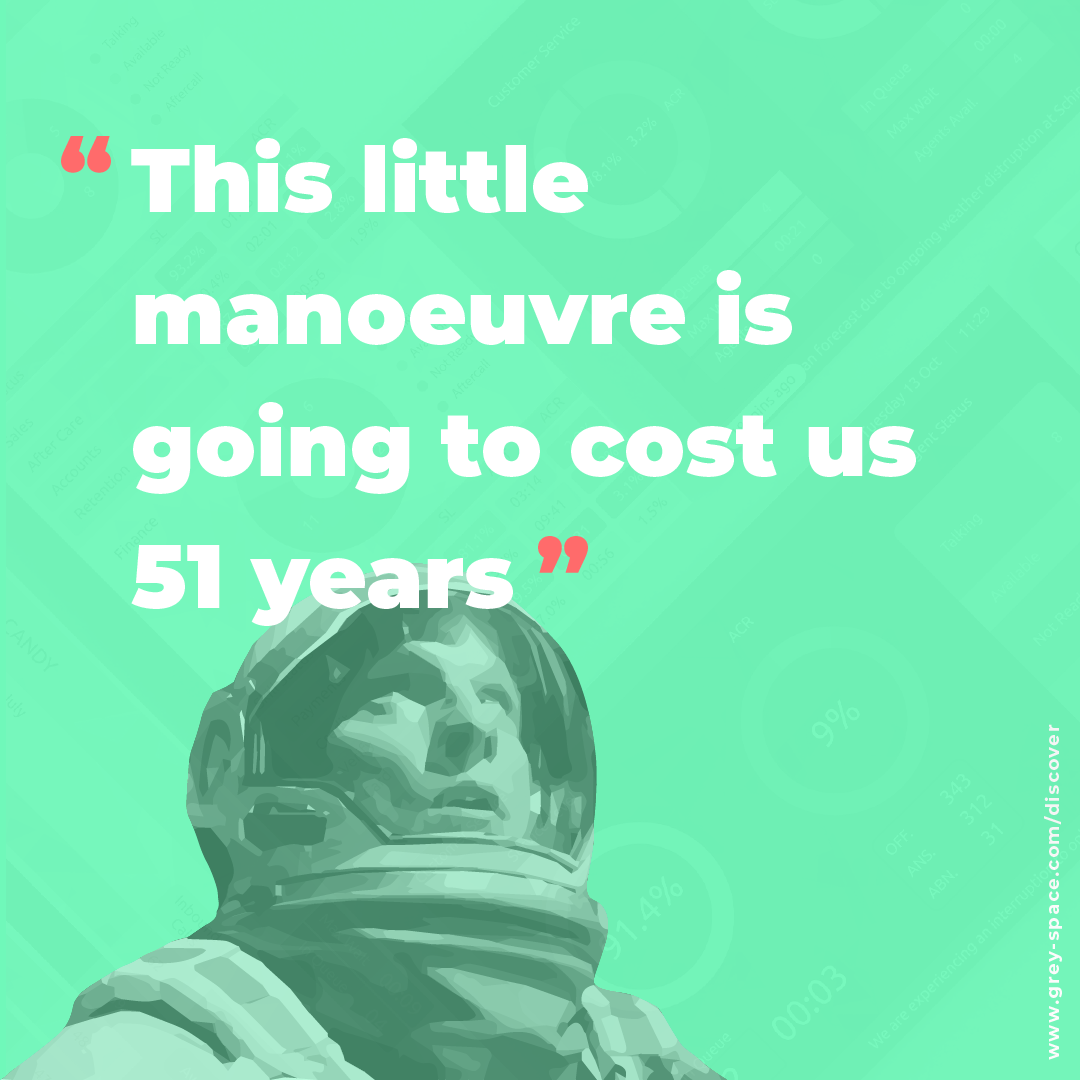Search Results
35 items found for ""
- Discover 2.3 Sneak Peak
The Discover 2.3 update is almost here and brings with it some massive changes on the front, and on the back end. It's been all hands on deck the last few months so I wanted to share what we've been working on and what's coming. Wallboard Playlists Changes The introduction of wallboard playlists in 2.0 has been a hit with our users so we thought it was only fair to spend the time to refine, and get the most out of this feature, which involved a two pronged attack: To start, we experimented with caching in our render engine to reduce load times during wallboard to wallboard transitions in playlists but this was a little more successful than expected and has, in fact, elminated load times entirely. With playlists working better than ever we decided to move forward with our plans to add interactive controls so users can now pause, skip, or select a specific wallboard to display from the playlist. After lots of design iteration both are stable and working in our test environment but we'll be spending a little longer than usual with the render engine changes to make sure everything is rock solid. User Experience We have performed a deep dive on the administration interface, this time, through the lens of the user experience. What resulted is a mountain of small, holistic additions and changes that have reduced user friction and made administering Discover a much more pleasant, and intuitive experience. Wallboard Templates As always, new templates will be coming. Right now we have two in concept ready for review while we test a potential new feature for paging through lists - watch this space. What's Next? We're making the final tweaks to a bunch of other features before deploying the final build to our test environment ready for formal testing next week and we'll share more detail as we get closer to release.
- Work in Progress
We don't often discuss our values as a company. To our users, we have the opportunity to demonstrate those values every day but to the outside world, that's more difficult. In the outside world, every company claims to value transparency and talk has never been cheaper - so we wanted to offer something more tangible. Last night, we added a release history to our website. This is essentially a living page that records the content and timeline for the feature updates Discover receives throughout the year so now you folks who might want to work with us can quantify "regular updates". It's a small gesture but data doesn't lie, data has no spin - if we do a good job this page will demonstrate that, and if not, it'll show that too. I think that's transparency.
- Trying is the First Step Towards Failure
We've been working away quietly on the next feature patch for Discover and this time took a bit of a chance with a new feature. This one was a long shot but investing in the development days to prototype was the only way to know for sure, and we wanted to try. Long story short, it didn't pan out and we've pulled the feature from the upcoming feature patch but it's not Dodo dead so it's back in the secret features list waiting for us to take another run at it. If I could wrap this up in a lesson, I'd quote Homer Simpson - "Trying is the first step towards failure", except failure is not a bad thing, it's the tuition we pay to learn, get better, and do better.
- Custom Wallboard Designs
There's no denying Burger King led the charge in giving people the freedom to use an insane combination of ingredients to construct a burger...but 'why is he talking about burgers?' I hear you say. We don't do burgers, but we do think you should be able to have contact centre wallboards your way. That's why we offer full wallboard customisation - that can be branding, maybe new colours, or our designers can build something entirely new and completely to specification. Why would you settle for "good enough"?
- Failures, Auto-Recovery, and Humour
Contact Centre environments are more complex than ever, and while that complexity exists for good reason, it also brings with it more potential for things to go wrong. Discover delivers real-time contact centre wallboards and sits right at the end of a string of integrated contact centre platforms, applications, networks, and clients - there is a lot that can go wrong. To display the KPIs you need every few seconds, each part of that process needs to work flawlessly - day in, and day out. The vast majority of the time this process serves up the data we need, but sometimes that doesn't happen, and we have prepared. Discover has bespoke error handling for almost any curve ball that can be thrown at it and we've made sure that, where possible, Discover performs continuous checks to attempt auto-recovery as soon as the issue is resolved. If not, we'll provide users with all the information they need to understand the problem and the actions they need to take to achieve a resolution. Problems are a bit of a taboo subject and we do hope you never see this, but there's nothing wrong with a bit of levity, even when things go wrong.
- It's Release Day!
Discover 2.2 is good to go. Users - we will be in touch this week to schedule a change window so we can get all this goodness in your hands. Treat yourself to the full release notes below and, if you love nerding out, check out our full feature release timeline because we have much to share with you. Features, Changes, and Enhancements. Added: Not Ready Reason Codes can now by tagged as “Aftercall” so wallboards and dashboards can accurately reflect contact centre platform configurations using more than one aftercall state. Added: a brand-new Discover Health Dashboard in the Administration UI, completely redesigned from the ground up. Added: “Agent States” to the Data Dictionary Manager, allowing users to define custom agent states. Added: “Not Ready Reasons” to the Data Dictionary Manager, allowing users to define custom agent not ready reasons. Added: a new customisable “No Data Available” message to lists where there are no rows to display. Added: a “Hide When Empty” option to the Element Editor that allows Discover to hide specific list columns that contain no data. Added: an option to the Element Editor allowing users to decide whether dashboards and wallboards using agent status lists should show a specific Not Ready Reason, or “Not Ready”. Updated: the Not Ready duration shown in agent status lists will now represent the agent’s duration in the specific Not Ready Reason, previously this would show the agent’s duration in all Not Ready states. This affects AACC and ACCS users only. Added: a “Last Modified” field to the Data Dictionary to show when an entity has been changed. Added: a “Hide on Zero” option to the Element Editor for Agent Status Blocks. This allows Discover to hide an agent status segment where no agents are in that state. Updated: reduced the default Screen Rotation Time from 30 seconds to 15 seconds. Wallboard and Dashboard Templates. Added: two new template designs making full use of the image features introduced in version 2.1: 'Team Performance and Queue Status' 'Two Team Performance and Queue Status' Bug Fixes and Optimisations. Added: new error handling and recovery for a reported loss of data between Discover and the contact centre platform causing an unrecoverable crash. Fixed: the Screen Rotation Time field in the Screen Editor no longer resets to the default value when editing a screen. Optimised: further application logging optimisations have increased overall performance. Fixed: The Discover Administration Interface now ignores trailing spaces in name fields. Known Issues. Longer user defined Not Ready Reason text may exceed the limits of the graphical container in some wallboard and dashboard templates.
- Diagnostic Dashboard Sneak Peak
The Discover 2.2 Feature Patch includes a brand new diagnostic dashboard with more data, and more style. We really just wanted to share this because the dev team did such a fantastic job bringing some of the new design features to life and the final build is so close to the concept design, I can barely tell the difference. We'll have more news on the release of Discover 2.2 in coming weeks so be sure to stay in touch.
- Finding Common Ground
In the past our design team worked in isolation creating wallboard and dashboard designs with no real limitations, except maybe their imagination. The output was phenomenal but it created a headache for the developers who had the task of bringing the more complex features to life. In March this year, we switched up our process so that design and development work together at every stage of the creation of a new design. The boring part of the story is we did this to reduce design rework - and that has happened - but, what we're also seeing are the designers bringing the same off-the-wall features to the table rebuilt in a way that (mostly) respects the limitations described by the developers. The developers, in kind, keep pulling rabbits out of hats to make them real and the list of limitations is shrinking everyday. The moral of the story is, we meant this and it was 100% on purpose..
- Ready to Go Wallboard Templates
A big component of our user base, at some point, commission their own custom wallboard designs. When you know exactly what you want, a design built to requirement is unquestionably the way to go. But, for the folks who want to get up and running REALLY quickly, Discover includes a library of ready-to-go templates that we routinely add to. This, currently unnamed design (suggestions welcome), has just passed from concept to review for inclusion in the upcoming 2.2.0 patch. May the 4th be with you.
- Keep it Simple Stupid
Recently, we've been experimenting with more interesting and complex ways of representing contact centre KPIs graphically in Discover. It's a fine line to tread in design because while more interesting works, more complex does not equal more good. How KPIs are represented is the single most important factor in how efficiently that data is read and understood by the user but, in my opinion, it should look great too. How important are wallboard and dashboard aesthetics to you? A priority, an afterthought, or something in between?
- Progress in Numbers
In October 2021 we launched Discover 2.0 which was rebuilt from the ground up with a brand-new UI, a bunch of optimisations and features, and a framework to support our aspirations for Discover going forward. We had planned to stop throwing all our development resource at Discover but we’re having too much fun. In the last 6 months we’ve release four updates based on our own ideas and feedback from our users and we’ve just scoped the contents for a fifth to bundle with our .NET 6 migration. Here’s the not-boring stuff our users have been enjoying: - New Wallboard Template Designs - New KPI Filtering Options - New Threshold Formatting Animations - Automated Contact Centre and CCaaS Data Dictionary Synchronisation - Automated User Password Resets - Added 21:9 Ultrawide and 16:10 Wallboard Support - New List Management Features - New Tenanting Features - Expanded User Roles and Permissions We are concepting some big features I’m personally quite excited about and I can’t wait to bang my head off the desk wondering why the development environment is on fire. You can follow the continued development of Discover using the Discover Timeline.








